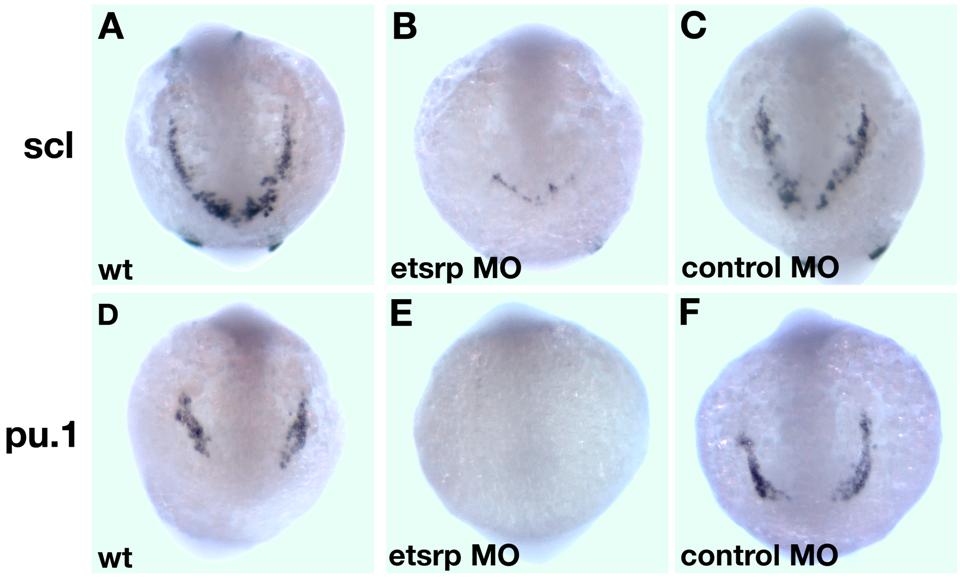Blood, Vol. 111, Issue 9, 4500-4510, May 1, 2008
Interplay among Etsrp/ER71, Scl, and Alk8 signaling controls endothelial and myeloid cell formation
Blood Sumanas et al. 111: 4500
Supplemental materials for: Sumanas et al
Files in this Data Supplement:
- Table S1. Experimental data on etsrp, scl, and alk8 RNA interaction/epistasis experiments described in Figure 4 (PDF, 20.9 KB)
- Figure S1. 5-base etsrp control mismatch MO218 fails to cause any apparent defects in the hemangioblast marker scl (A-C) and myeloid marker pu.1 (D-F) expression at the 12-somite stage (JPG, 76 KB) -
Anterior view, dorsal is up. (A, D) Uninjected control embryos; (B, E) 7.5 ng etsrp MO2 injected embryos; (C, F) 7.5 ng 5-base etsrp MO2 mismatch injected embryos.
- Figure S2. Etsrp overexpression induces ectopic expression of myeloid-specific pu.1 (arrows, D) but does not significantly affect erythroid-specific gata1 (A,B) at the 8-somite stage (JPG, 69.7 KB) -
(A,B) Dorso-posterior view, (C) anterior view, dorsal is up, (D) ventrolateral view, anterior is to the left. (A,C) Control uninjected embryos; (B,D) etsrp RNA-injected embryos.
- Figure S3. scl RNA induces etsrp expression at the 16-somite stage (JPG, 59.3 KB) -
Dorsal view, anterior is to the left. (A) Control uninjected embryo; (B) scl RNA-injected embryo. Note that ectopic etsrp expression is limited to the somitic mesoderm.